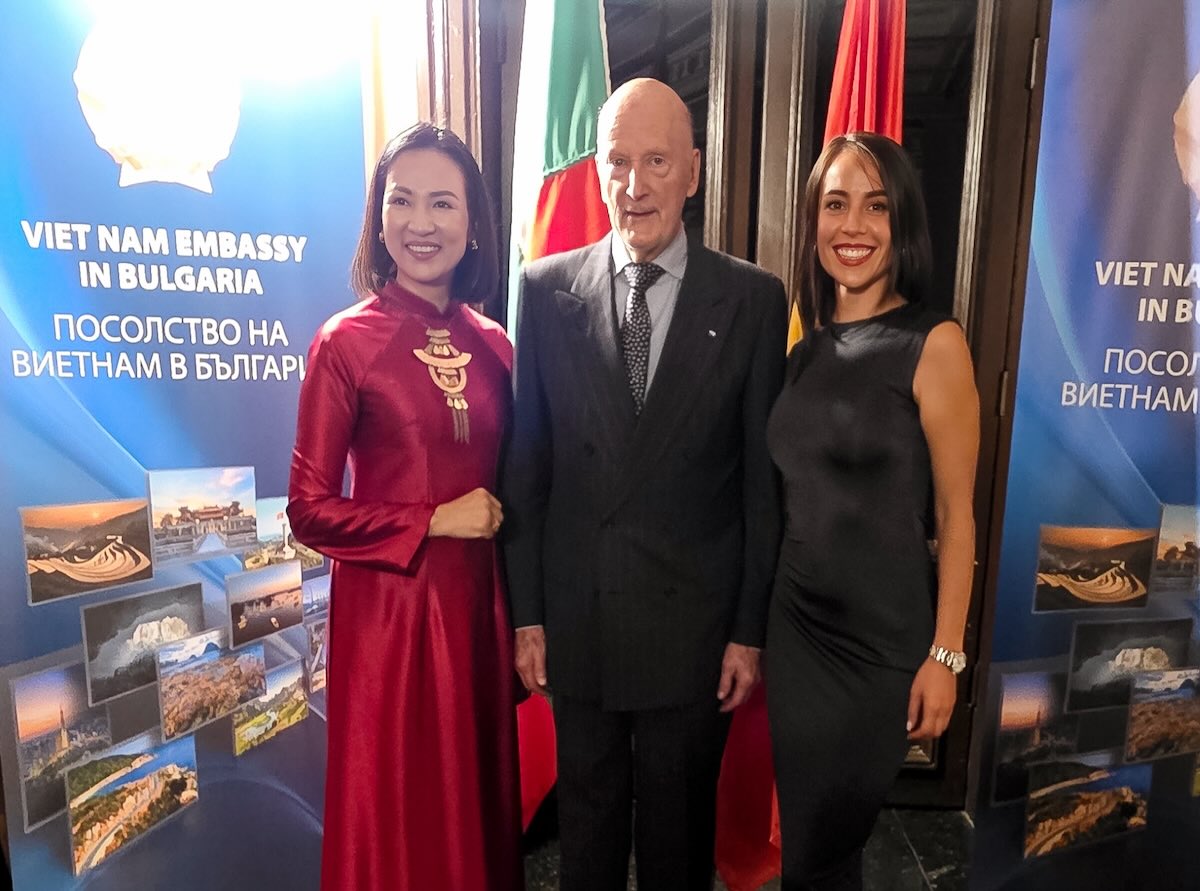
Global Virus Network (GVN) studies suggest that the oral polio vaccine can protect people in developing nations that do not yet have access to COVID vaccines
— Farrokh Habibzadeh, MD
BALTIMORE, MARYLAND, USA, March 31, 2022 /EINPresswire.com/ — Two new studies from the Global Virus Network (GVN) in partnership with the Petroleum Industry Health Organization of Iran provide evidence that getting the oral polio vaccine made from live, weakened poliovirus may protect people from COVID-19 infection by stimulating the immune system.
One of these studies demonstrated a lower incidence of COVID infections in countries in which people received the ‘live’ polio vaccine compared to countries that only received the polio vaccine that does not contain a live virus. These findings were published on March 17, 2022, in PLOS One.
Another report from the research team showed that when young children received the ‘live’ polio vaccine their mothers, who were indirectly exposed to the poliovirus vaccine, did not get infected with COVID. This study was published late last year in JAMA Network Open.
Within a few hours of exposure to any pathogens — including weakened viruses like those in the oral polio vaccine —, the immune system activates its first line-of-defense. This defense produces an immune response to a broad variety of pathogen-related molecules and ramps up the immune system’s readiness for invaders: a process sometimes called ‘trained innate immunity.’ The outcome from one of these newest studies indicate that this trained innate immune response spurred by vaccination using the live poliovirus may provide protection for up to 6 months against COVID infection.
The researchers say that this implies that these live vaccines, technically known as live attenuated vaccines, may be used temporarily to protect people in low-income countries that do not yet have access to COVID vaccines.
“Although countries like the U.S. and those in Europe are dropping pandemic restrictions, many people in lower income countries remain unvaccinated due to lack of supply. Individuals in these countries are still at high risk for COVID infection and potential complications, particularly since these regions still lack the latest treatments and enough ventilators for those who need them,” said co-author Shyam Kottilil, MBBS, PhD, Professor of Medicine and Director of the Division of Clinical Care and Research, Institute of Human Virology, Chief of the Division of Infectious Diseases at the University of Maryland School of Medicine, and senior advisor to the GVN. “These live vaccines may provide a stop gap to reduce hospitalizations and deaths until we can get these people COVID vaccines.”
Senior author on the studies Robert Gallo, MD, The Homer & Martha Gudelsky Distinguished Professor in Medicine, Co-Founder and Director of the Institute of Human Virology at the University of Maryland School of Medicine, a GVN Center of Excellence, and Co-Founder of the GVN and Chair of the GVN’s Scientific Leadership Board, said, “Early in the COVID-19 pandemic, prior to development of effective vaccines we proposed using live attenuated vaccines as a temporary solution to boost immunity until the vaccine could be developed. This idea directly stemmed from my GVN colleague and co-author Dr. Konstantin Chumakov, whose parents were vaccine researchers in the 1970s Soviet Union. His parents observed that flu rates seemed to drop in those people given the oral polio vaccine. Other GVN colleagues joined us in advocating for studies to determine if these live attenuated vaccines would be a feasible strategy during the coronavirus pandemic. Now we have some of the first evidence that they do offer protection. I hope funders take notice and increase support for these types of trials that study the innate immune response and provide significant hope in mitigating future pandemics.”
Co-author Konstantin Chumakov, PhD, a GVN Center of Excellence Director, said, “These observations are yet another confirmation that live vaccines induce broad protection against infections caused by pathogens other than their direct target. They urgently call for the direct prospective clinical studies of this phenomenon that could lead to the development of a novel class of vaccines based on stimulation of trained innate immunity. Such vaccines could become the badly needed universal countermeasure against emerging infections.”
“The GVN serves as a catalyst to bring together the world’s foremost virologists,” Christian Bréchot, MD, PhD, President of the GVN, Associate Vice President for International Partnerships and Innovation at University of South Florida (USF), and Professor, Division of Infectious Disease, Department of Internal Medicine at the USF Health Morsani College of Medicine, the GVN Southeast U.S. Regional Headquarters. “We are pleased to work with varying nations to initiate these important clinical trials.”
In the PLOS One study, the researchers compared infection rates per 100,000 people in 146 countries that received both the live and the injectable polio vaccine, which does not contain live virus, compared to 56 countries that only used the injectable, non-live version. They found infection rates in countries that did not use the live polio vaccine were about three times higher than those that did use the live polio vaccine.
For the JAMA Network Open study, the researchers followed 419 mothers in Iran whose young children were given the live polio vaccine compared to 3,771 mothers whose children did not receive the live polio vaccine. None of the mothers whose children received the live polio vaccine developed COVID, whereas 28 mothers whose children did not receive the live polio vaccine did contract COVID within 9 months. Researchers know that poliovirus and even the weakened virus from the vaccine can be shed in the stool. The researchers surmise that the mothers were exposed to virus when caring for their children through bathing and diaper changing.
“It is heartening to find similar study results obtained from very different approaches strengthening our hypothesis that using the oral vaccine may provide protection against SARS-CoV-2, the virus that causes COVID,” said the first author on the studies Farrokh Habibzadeh, MD, Special Consultant on Public Health for the GVN and the Managing Director of the Research & Development Unit of the Petroleum Industry Health Organization of Shiraz, Iran. He added that, “This hypothesis should be tested in additional quality clinical trials, preferably conducted in countries where the oral polio vaccine is currently in use as part of their national immunization for polio.”
Co-author Kristen Stafford, PhD, MPH, Associate Professor of Epidemiology & Public Health at the Institute of Human Virology at the University of Maryland School of Medicine and member of the GVN, said, “Some high-income countries declare pandemics over when in fact they just transition to only affecting low-income countries. We do not want this pandemic to become like the HIV-epidemic, where years and years of delays led to millions of excess deaths because the antiretroviral medications were too limited in supply or expensive to reach those disproportionately affected. We need to find simpler, inexpensive solutions to protect people until they can get their full doses and boosters of the COVID vaccines.”
One of the limitations of the live, weakened vaccines, is that they are not recommended for people with suppressed immune systems, as it could lead to infection.
“The important observations that the oral polio vaccine may protect against different infections such as COVID-19 is crucial for future pandemic preparedness. Understanding the mechanisms of protection induced by the oral polio vaccine and other live attenuated vaccines can open the door for the development of improved vaccination strategies to protect against broader infections, and thus provide partial protection against new pathogens during a pandemic until specific vaccines can be developed,” said Mihai Netea, MD, PhD of the Department of Internal Medicine and Radboud Center for Infectious Diseases, Radboud University Medical Center, a GVN Center of Excellence, and GVN Center Director.
Additional authors on the studies include Mohammad Sajadi, MD, Professor of Medicine at the Institute of Human Virology at the University of Maryland School of Medicine and member of the GVN; Mahboobeh Yadollahie, MD, Ashraf Simi, BScN, Saeid Saeidimehr, MD, (JAMA Network Open only), Mohammad Rafiei, MD, (JAMA Network Open only), and Iman Hafizi-Rastani, MSc (PLOS One only) of the Petroleum Industry Health Organization of Iran.
The authors received no specific funding for this work.
Dr. Kottilil received grants from Gilead for other research and serves on the advisory boards of Merck and Regeneron.
About the Global Virus Network (GVN)
The Global Virus Network (GVN) is essential and critical in the preparedness, defense and first research response to emerging, existing and unidentified viruses that pose a clear and present threat to public health, working in close coordination with established national and international institutions. It is a coalition comprised of eminent human and animal virologists from 69 Centers of Excellence and 11 Affiliates in 37 countries worldwide, working collaboratively to train the next generation, advance knowledge about how to identify and diagnose pandemic viruses, mitigate and control how such viruses spread and make us sick, as well as develop drugs, vaccines and treatments to combat them. No single institution in the world has expertise in all viral areas other than the GVN, which brings together the finest medical virologists to leverage their individual expertise and coalesce global teams of specialists on the scientific challenges, issues and problems posed by pandemic viruses. The GVN is a non-profit 501(c)(3) organization. For more information, please visit www.gvn.org. Follow us on Twitter @GlobalVirusNews
Nora Samaranayake
Global Virus Network (GVN)
+ +1 443-823-0613
[email protected]
Visit us on social media:
Facebook
Twitter
LinkedIn
![]()
The post ‘LIVE’ POLIO VACCINE FIRES UP IMMUNE SYSTEM PROVIDING PROTECTION FROM SARS-CoV-2 INFECTION first appeared on Social Gov.
 ,
,





